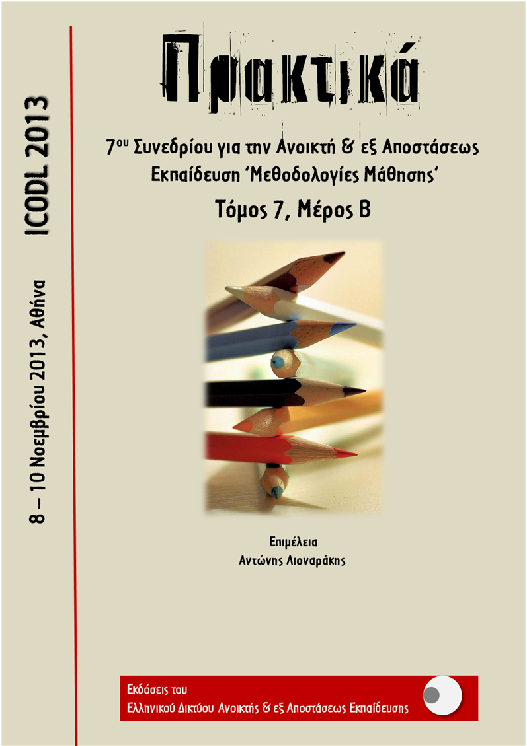Approaching Art in distance learning: The necessity of oral interaction
Περίληψη
A thorough examination of Art as Phenomenon and scientific field reveals the great connection of it with philosophy since it was the evolution of philosophical thought that formed the theoretical background for the classification and evaluation systems (Fine and Applied Arts) that modern man uses to understand and approach it. The conception of that fact is crucial for the methods that should be preferred for the instruction of artistic and aesthetic courses within the frames of higher education programs since teaching Art should be treated proportionally as teaching Philosophy. As a result, the tuition should be based on dialogue, live interaction and mainly oral communication between tutors and students. Conventional education conducted inside classroom, structurally focuses on the personal contact between everyone involved in the didactical process and thus creates the necessary premises for the tuition of Art and Philosophy. However, distance learning programs should pay a great deal of attention to that matter, since all methods of distance learning are not proper for ensuring the above conditions. We must take under consideration the division of distance education in asynchronous and synchronous, with the latter one using basically sound and video conference, being the appropriate suggestion for the creation of a successful substitute of an educational atmosphere of immediate socialization and opinion’s exchange among students and teachers. In that way, Art, regardless Fine or Applied orientation, would be instructed as a scientific course through its aesthetical and philosophical depth, without being downgraded to the level of empirical knowledge.
Λεπτομέρειες άρθρου
- Ενότητα
- Τμήμα Β
Οι συγγραφείς των άρθρων που δημοσιεύονται στα πρακτικά του συνεδρίου για την Ανοικτή και εξ Αποστάσεως Εκπαίδευση διατηρούν τα δικαιώματα πνευματικής ιδιοκτησίας επί των άρθρων τους. Άρθρα που δημοσιεύονται στα πρακτικά διατίθενται με άδεια Creative Commons 4.0 και σύμφωνα με την άδεια μπορούν να χρησιμοποιούνται ελεύθερα, με αναφορά στο/στη συγγραφέα και στην πρώτη δημοσίευση για μη κερδοσκοπικούς σκοπούς και με δικαίωμα τροποποίησης μόνον με παρόμοια διανομή (αν αναμείξετε, τροποποιήσετε, ή δημιουργήσετε πάνω στο υλικό, πρέπει να διανείμετε τις δικές σας συνεισφορές υπό την ίδια άδεια όπως και το πρωτότυπο).



